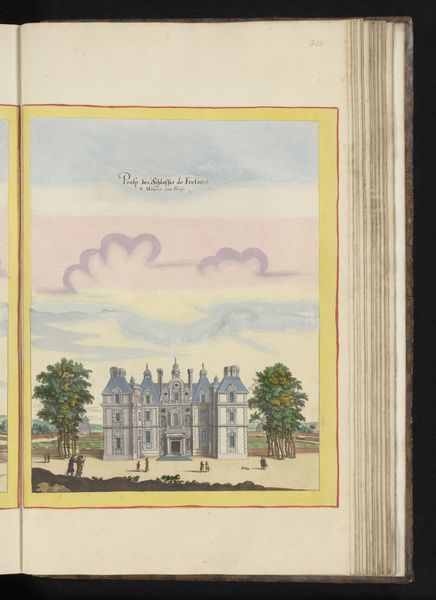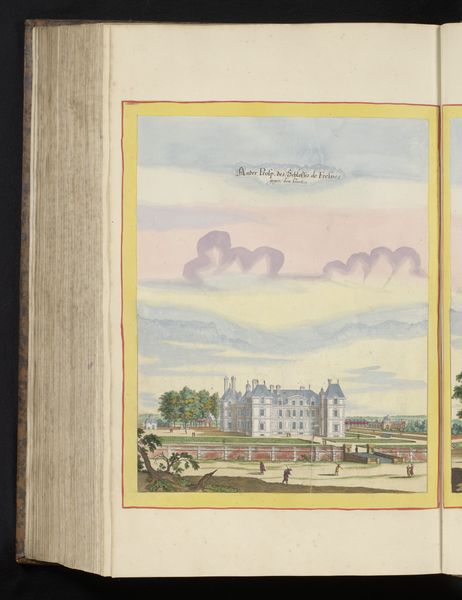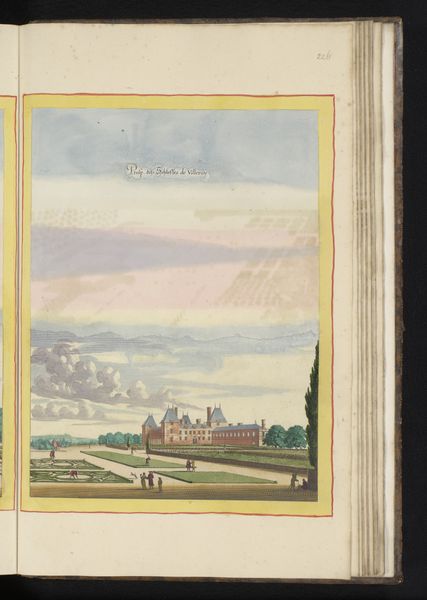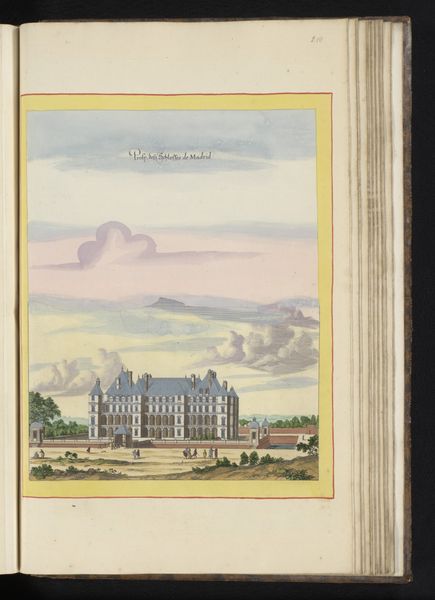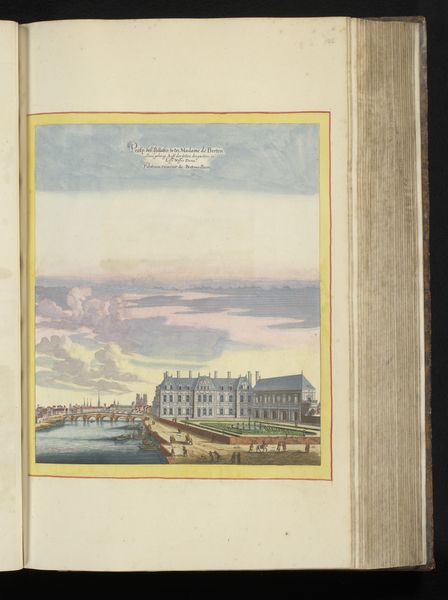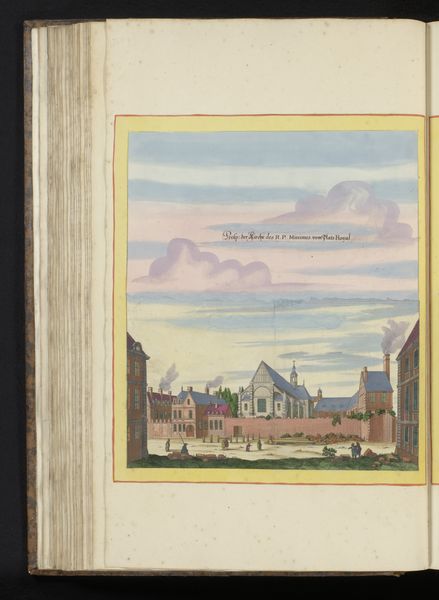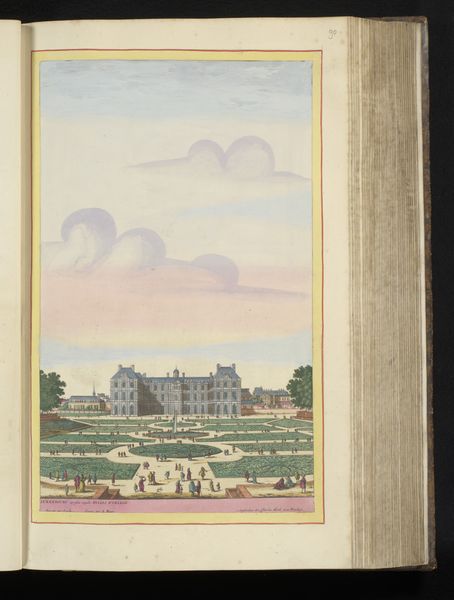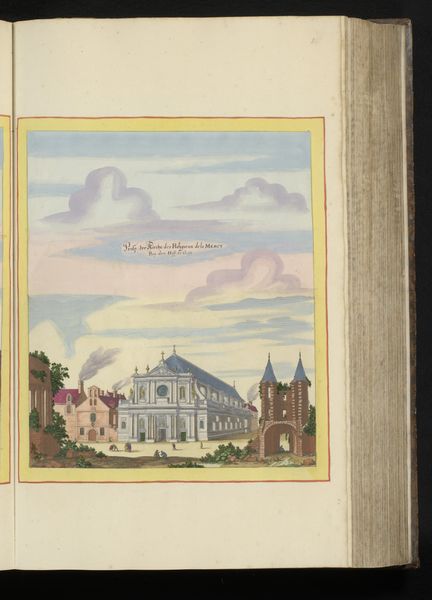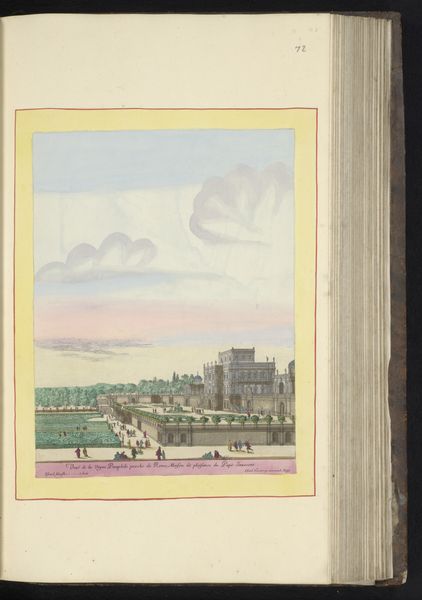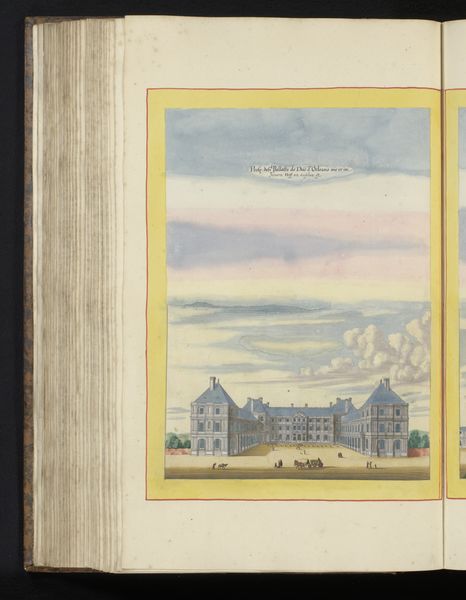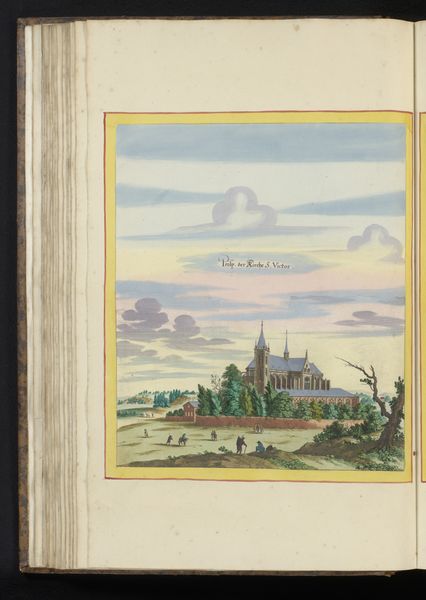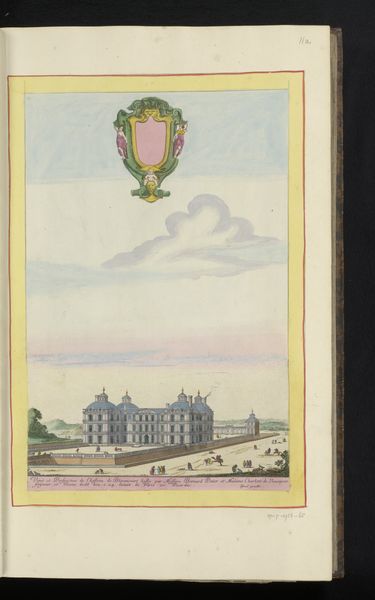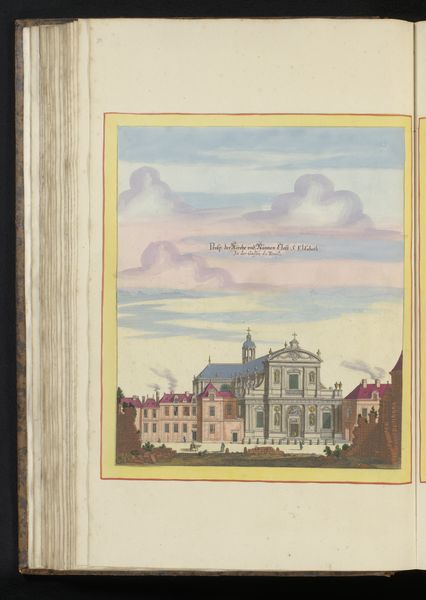
drawing, watercolor
#
drawing
#
baroque
#
landscape
#
watercolor
#
coloured pencil
#
watercolor
Dimensions: height 274 mm, width 285 mm, height 536 mm, width 337 mm
Copyright: Rijks Museum: Open Domain
Curator: At first glance, the atmosphere feels surprisingly peaceful. It’s gentle, with the sky painted in soft pinks and lavenders. Is it meant to convey serenity, despite the monumentality of the chateau? Editor: This watercolour drawing from 1655 is titled "View of the Chateau of Meudon" and it was made by Matthäus Merian the Younger. Let's delve into this Chateau: the Meudon estate served as the primary residence for figures central to courtly life, marking their sphere of influence with grandeur. We might see similar landscapes in tapestries—think power, politics, wealth… Who exactly lived here and how did that position reflect societal structures of the time? Curator: I think it’s interesting to consider how chateaux such as these are symbolic focal points during moments of transition. Notice that the Chateau overlooks all it surveys. Editor: That sense of overview is cleverly suggested in this depiction through vantage. Merian utilizes established iconographic traditions by literally showing the figures that represent Power above the landscape, emphasizing control and dominance over not only nature, but social order too. This viewpoint is a potent assertion of authority in that historical moment. Curator: Yet there’s almost a sense of idealization. The palette softens the effect, and the figures appear almost decorative against this constructed, picturesque vista. I'm thinking about the intended audience; did the work act to normalize these systems or was it perhaps a quiet challenge from the artist? Editor: I find it hard to divorce an image such as this from its inherent claim to power. Though the soft watercolors are beautiful, one must be very aware of the politics embedded within landscapes such as this. The soft aesthetic here is actually masking very potent hierarchies. Curator: Well, examining this drawing with these layers in mind really prompts a deeper consideration. What began as a peaceful observation unveils itself as a reflection of historical power dynamics, highlighting a connection between visual imagery and socio-political frameworks. Editor: It makes me consider what visual traditions we choose to carry forward, and why. How can images actively rewrite or redress old symbols?
Comments
No comments
Be the first to comment and join the conversation on the ultimate creative platform.
